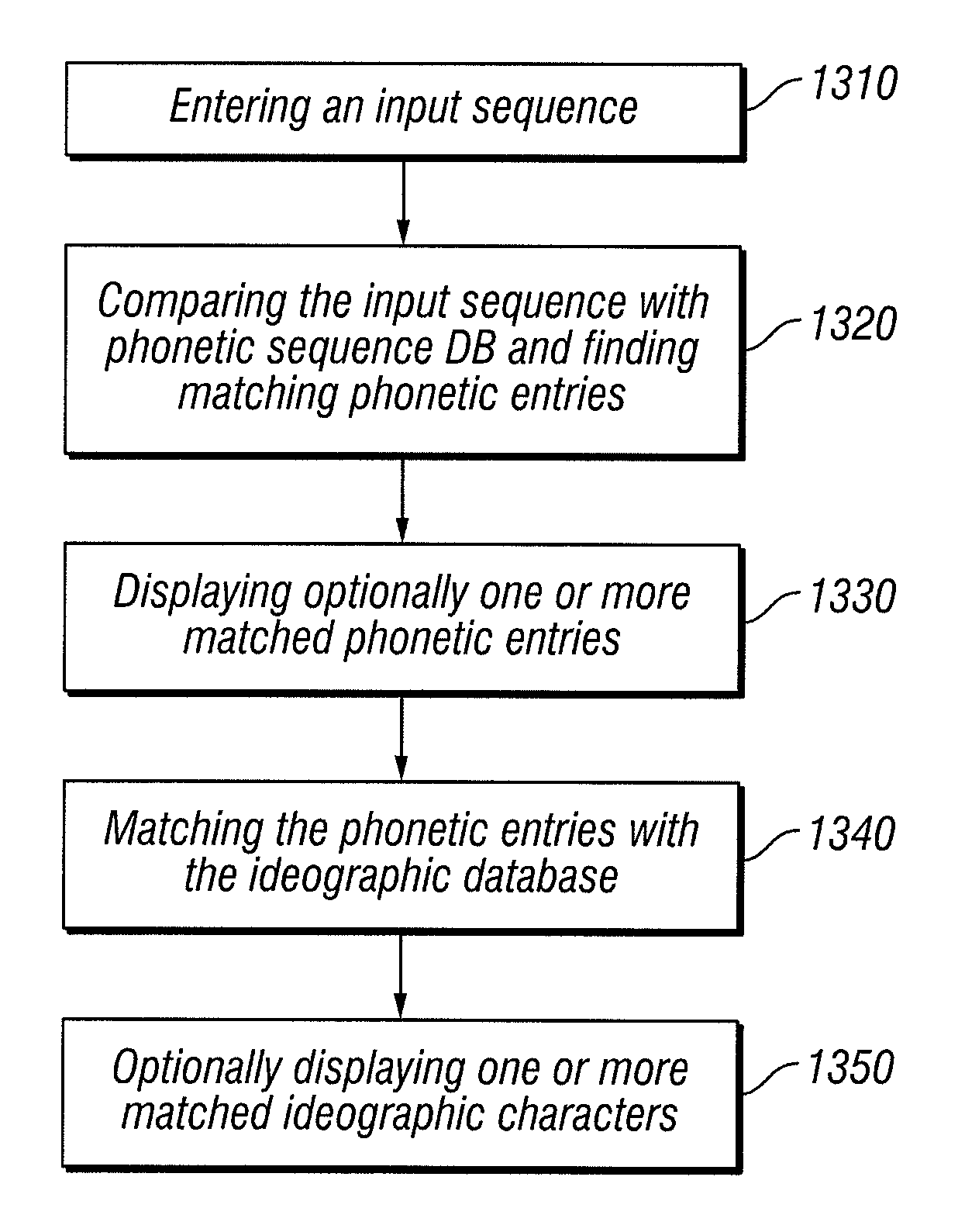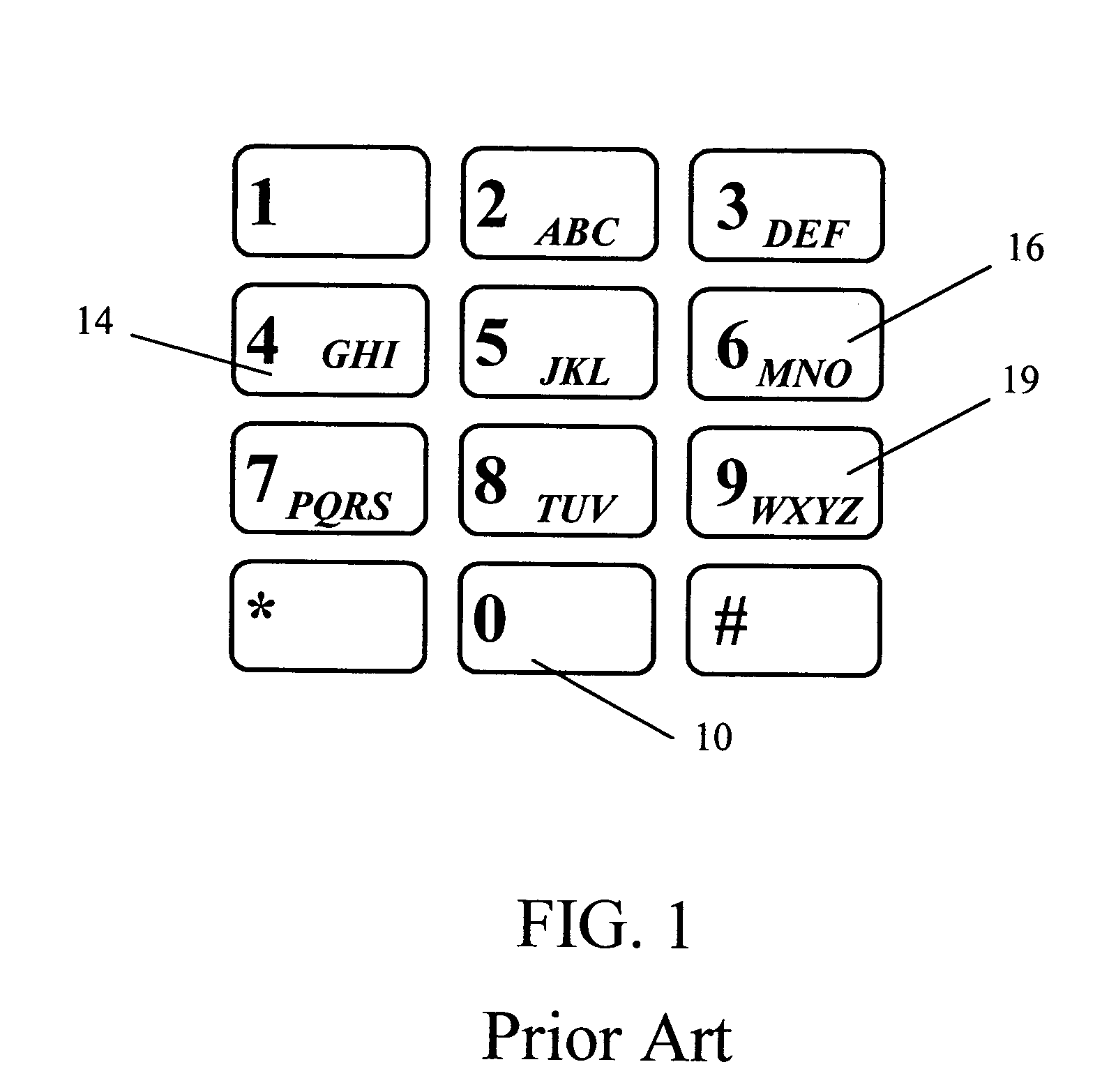System and method for disambiguating phonetic input
a phonetic input and phonetic technology, applied in the field of chinese input technology, can solve the problems of limiting the size of the keyboard, affecting the true portable use of the computer, and being too small to be easily or quickly manipulated by a regular user, so as to reduce the amount of attention and decision-making, reduce the cognitive load on the user, and reduce the number of keystrokes
- Summary
- Abstract
- Description
- Claims
- Application Information
AI Technical Summary
Benefits of technology
Problems solved by technology
Method used
Image
Examples
Embodiment Construction
System Construction and Basic Operation
[0046]With reference to FIG. 2, a reduced keyboard disambiguating system formed according to this invention is depicted as incorporated in a portable cellular telephone 52 having a display 53. The portable cellular telephone 52 contains a reduced keyboard 54 implemented on the standard telephone keys. For purposes of this application, the term “keyboard” is defined broadly to include any input device including a touch screen having defined areas for keys, discrete mechanical keys, membrane keys, and the like. The arrangement of the Latin alphabets on each key in the keyboard 54 is corresponding to what has become a de facto standard for American telephones. Note that keyboard 54 thus has a reduced number of data entry keys as compared to a standard QWERTY keyboard, where one key is assigned for each Latin alphabet. More specifically, the preferred keyboard shown in this embodiment contains ten data keys numbered ‘1’ through ‘0’ arranged in a 3-...
PUM
 Login to View More
Login to View More Abstract
Description
Claims
Application Information
 Login to View More
Login to View More - R&D
- Intellectual Property
- Life Sciences
- Materials
- Tech Scout
- Unparalleled Data Quality
- Higher Quality Content
- 60% Fewer Hallucinations
Browse by: Latest US Patents, China's latest patents, Technical Efficacy Thesaurus, Application Domain, Technology Topic, Popular Technical Reports.
© 2025 PatSnap. All rights reserved.Legal|Privacy policy|Modern Slavery Act Transparency Statement|Sitemap|About US| Contact US: help@patsnap.com



